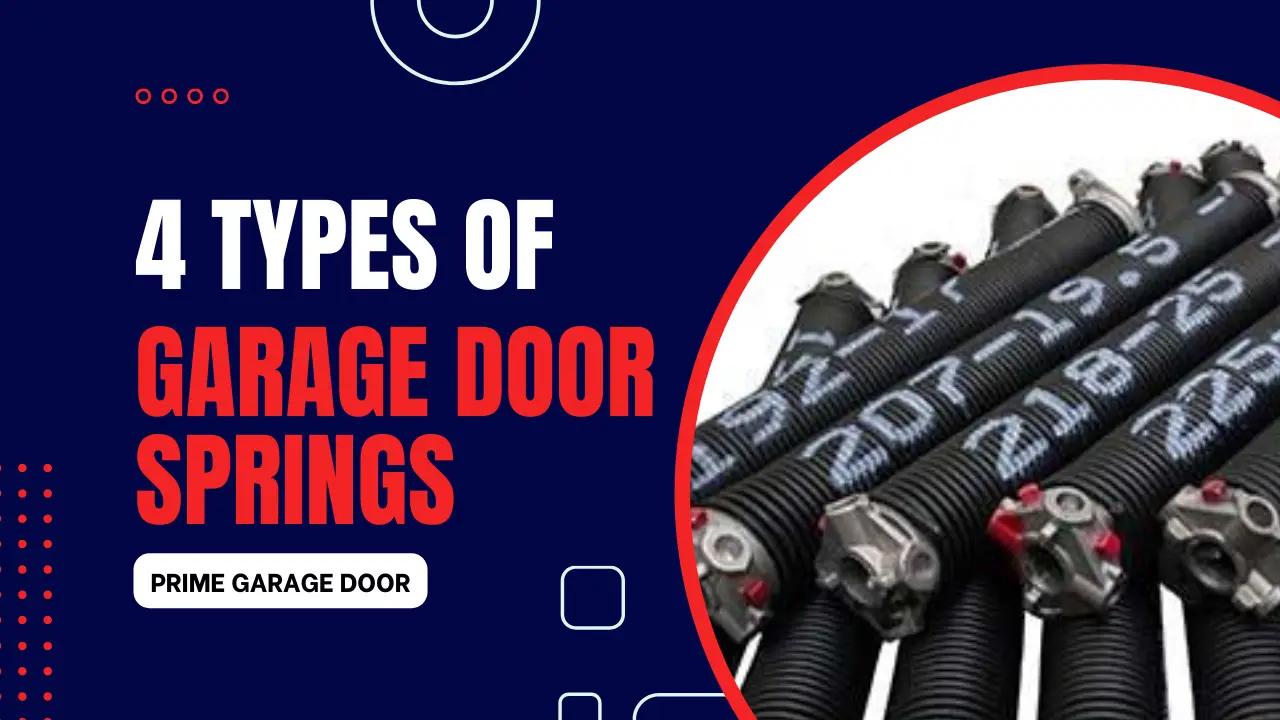In the vast universe of home improvements, one component that often goes unnoticed is the humble garage door spring. Yet, these heavy-duty garage door springs play a pivotal role in your daily life, facilitating the smooth operation of your garage door. This guide intends to shed light on different types of garage door springs and help you make an informed decision when it comes to choosing the right one for your garage door.
What Are the Different Types of Garage Door Springs?
There are primarily four types of garage door springs:
- Extension Springs
- Torsion Springs
- Torquemaster Springs
- Sectional Garage Door Springs
Garage Door Extension Springs
Garage door extension springs are the most common type of springs used in residential garage doors. They are typically mounted along the horizontal tracks on either side of the door and extend or “stretch” as the door is lowered.
Torsion Spring Garage Door
Unlike extension springs, torsion springs are mounted on a metal rod above the garage door. When the door is operated, these springs use torque to lift the door.
Torquemaster Garage Door Spring
A Torquemaster spring system, developed by Wayne Dalton, is a two-spring system inside the metal tube above the door. The springs are wound and unwound with a drill or a hand tool, making it safer and easier to install and adjust.
Sectional Garage Door Springs
Sectional garage door springs, or counterbalance springs, are a type of extension spring. They provide counterbalancing force to support the weight of the door as it opens and closes.
Is One Garage Door Spring Better Than The Other?
Choosing between different types of springs primarily depends on the type of door, its weight, and your usage. For instance, a torsion spring garage door is more suitable for heavy doors, while garage door extension springs work well for lighter doors.
Moreover, custom garage door springs are also available for unique door types and specifications. Always consult with a professional to assess your requirements and choose the best garage door springs accordingly.
Conclusion
In conclusion, understanding the different types of garage door springs and choosing the right one is essential for the smooth operation of your garage door. Always consult with a professional and ensure regular maintenance to keep your garage door in top shape.
Frequently Asked Questions (FAQs)
How Many Types of Garage Door Springs Are There?
There are four main types of garage door springs: extension springs, torsion springs, torquemaster springs, and sectional garage door springs.
How Do I Know What Springs My Garage Door Needs?
The type of springs your garage door needs will depend on the weight and size of your door, and how often you use it. A professional can accurately assess these factors and recommend the most suitable type of spring.
Which Is Better: Torsion or Extension Springs?
Torsion springs are generally more durable and safer than extension springs. However, extension springs are cheaper and can still be a good choice for lighter, less frequently used doors.
What Is the Safest Spring for a Garage Door?
Torsion springs are considered the safest type of garage door springs because they are contained on a metal rod if they were to break. Torquemaster springs also offer increased safety as they are enclosed within a metal tube.
Remember, whatever type of spring you choose, it’s crucial to ensure regular maintenance for the optimal performance and longevity of your garage door springs.
Disclaimer: Replacing garage door springs can be dangerous due to the high tension in the springs. Always consult with a professional or a trained technician for garage door spring replacement.

